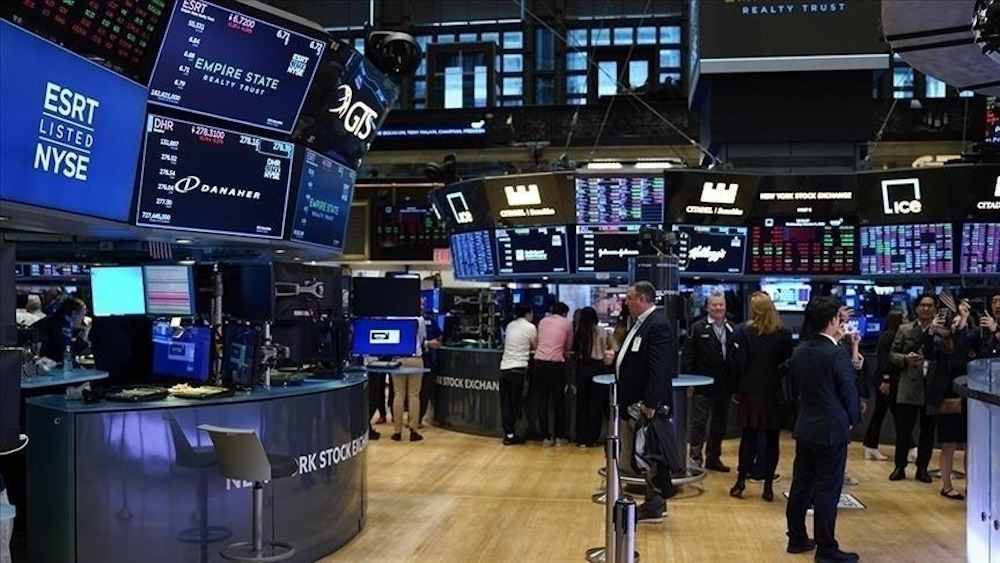
The S&P 500 experiences a decline for the fourth consecutive day following President Trump’s threats of tariffs on the European Union and Apple. On Friday, equities experienced a downturn as President Donald Trump reignited trade concerns, issuing a warning to Apple and advocating for increased tariffs on the European Union. The Dow Jones Industrial Average experienced a decline of 256.02 points, representing a decrease of 0.61%, concluding the session at 41,603.07. The S&P 500 experienced a decline of 0.67%, concluding at 5,802.82, while the Nasdaq Composite fell by 1%, finishing at 18,737.21.
Apple shares experienced a decline of 3% following a post by Trump on Truth Social, in which he stated that iPhones sold in the U.S. should be manufactured domestically, and failure to comply would result in a tariff of no less than 25% imposed on Apple. The action taken by Trump against Apple marks the inaugural instance of targeting a particular company in his tariff implementation this year. The president indicated that trade discussions with the EU “are going nowhere” and proposed “a straight 50% tariff on the European Union, starting on June 1, 2025.”
Equities rebounded from their intraday lows following CNBC’s Eamon Javers’ report indicating that the White House did not view Trump’s comments as a definitive policy statement. Trump’s actions occur during a period characterized by a reduction in tariff tensions. In April, Trump enacted tariffs on a majority of countries globally, causing significant volatility in the stock market and bringing the S&P 500 close to entering bear market territory. The president subsequently suspended the most stringent tariffs for a period of 90 days and initiated preliminary agreements with the U.K. and China, leading to a recovery in stock values. The S&P 500 returned to a neutral position for the year last week; however, it slipped back into negative territory by the conclusion of Friday’s trading session.
Investors engaged in stock purchases, driven by speculation regarding the potential for additional agreements to emerge with various nations during this three-month hiatus. Friday’s actions by Trump may suggest that optimism was unwarranted. “We’ve experienced a de-escalation tailwind in the market for approximately six weeks, resulting in one of the most favorable six-week periods in the past 75 years. However, a resurgence of trade war rhetoric poses a significant threat to this momentum.” “I don’t think we’ll retest the lows or anything like that, unless it really ramps up, but this is certainly a step in the wrong direction from the market’s perspective,” stated Ross Mayfield, investment strategist at Baird, during an interview with CNBC.
In other developments, United States Steel experienced a notable increase of 21% following Trump’s announcement on Truth Social regarding a prospective “partnership” with Nippon Steel. Earlier this year, the attempt by the Japanese company to acquire its U.S. rival was thwarted. Friday’s declines contributed to the market’s cumulative losses for the week. The major indices experienced a decline of over 2% during the week, with the S&P 500, Dow, and Nasdaq all reflecting this downturn.
Looking ahead, Rick Wedell, the president and chief investment officer at RFG Advisory, cautioned that this “roller coaster ride” of de-escalating and re-escalating tariff tensions is likely to be a permanent fixture of Trump’s second term. “It is crucial for investors to recognize that this persistent trade issue is expected to remain for, I believe, the entirety of this administration. I do not believe they will overlook trade considerations at any juncture. He stated that they perceive the rectification of international trade agreements as a defining characteristic of the administration’s legacy. “I would just encourage investors to remain vigilant and not be swayed by misleading perceptions in either direction.
